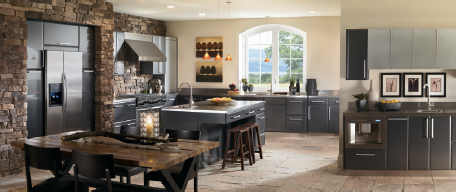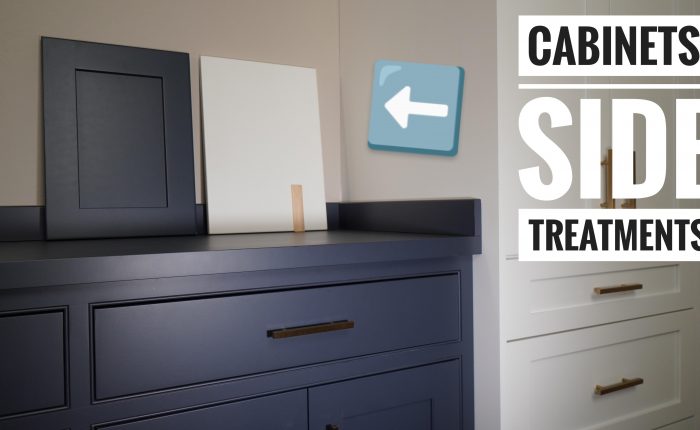
Durability in cabinetry
With an abundance of similar products in today’s market, choosing the right cabinetry for your home can be difficult. When you compare manufacturers, you may find different price tags and think the more affordable product is the better value. After more research, however, you may find more flaws and limitations in the lower-end cabinetry: fewer sizes, door styles, and finishes from which to choose. While those factors may influence your decision-making, the most important aspect of your investment should be the durability of the product. You need to invest in a product that will last.
Cabinet construction
The two most common construction materials for cabinets are particle board and plywood. In the higher-end market, you will also find medium density fiberboard (MDF). When compared to particle board, plywood is lighter, stronger, and tends to hold up better during installation and transportation. Plywood is also more resilient against small amounts of water damage. MDF is much denser than particle board and plywood, and therefore better withstands the stress of everyday use in the kitchen and bath. Furthermore, MDF performs much better when it comes to drilling and screw holding. Most importantly, MDF has minimal expansion and contraction, which allows for higher precision in craftsmanship.
Finish
The finish protects your investment. A good finish will protect the wood from grease, sticky fingers, and muddy hands. Most of the better cabinetmakers use fine wood furniture finishes that feature catalyzed conversion varnish. This finish is part of what enables some cabinetmakers to offer a lifetime warranty. Wood products with a catalyzed conversion varnish are much harder and stronger. With this finish, stains and glazes will not rub off or fade, as happens with lower-end products.
Door construction
Doors are often made of solid wood, wood veneers, or a combination of the two. Because wood veneers have their limitations in terms of bending and sanding, solid wood doors are often preferred if the door style has many details or a distressed finish. In the lower-end markets, you will find some use of lower grade laminates and melamine. While more affordable, these are more susceptible to damage.
Hardware
Hardware makes the cabinet functional. Many installers choose six-way adjustable hinges because they’re easy to use and quick tuning. Nicer hinges also have a “press and release” feature, which eliminates screwing and unscrewing the hinge to remove the door. Ball bearing glides run smoother and more quietly, and with a maximum load capacity of about 75 pounds per drawer box, they are also much sturdier than most glides. The better drawer glides also come with an automatic soft close to prevent slamming.
Drawer box
Melamine drawer boxes are common. The upgrade is the sturdier dovetailed drawer box. You can choose between a dovetailed plywood drawer and a dovetailed solid wood drawer; either of these performs better than a melamine drawer, and the best is the solid dovetailed style.
The above content was published in Home Digest Magazine in January 2007. For reference to the actual copy, please download this pdf file.
For other related content on how to get started on your remodel, please see How to Measure and Sketch a Floor Plan video, Typical Work Flow Procedure, and Typical Construction Schedules.


